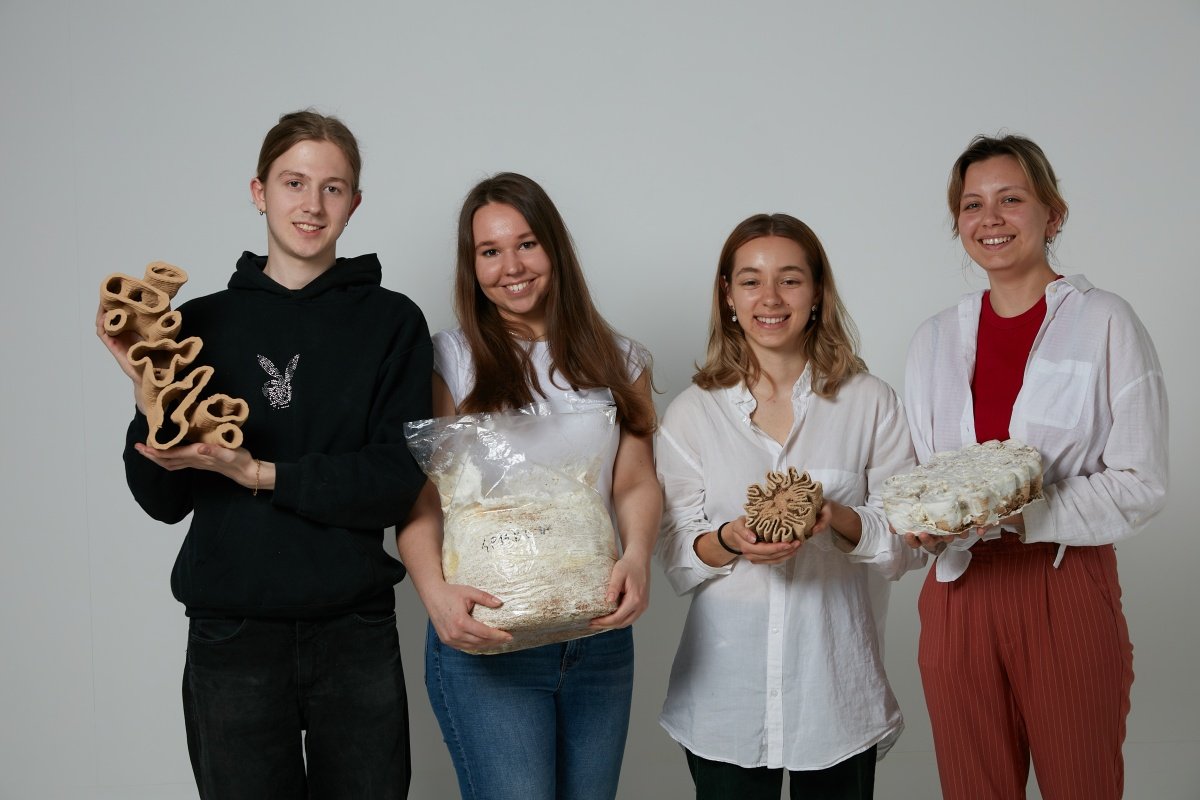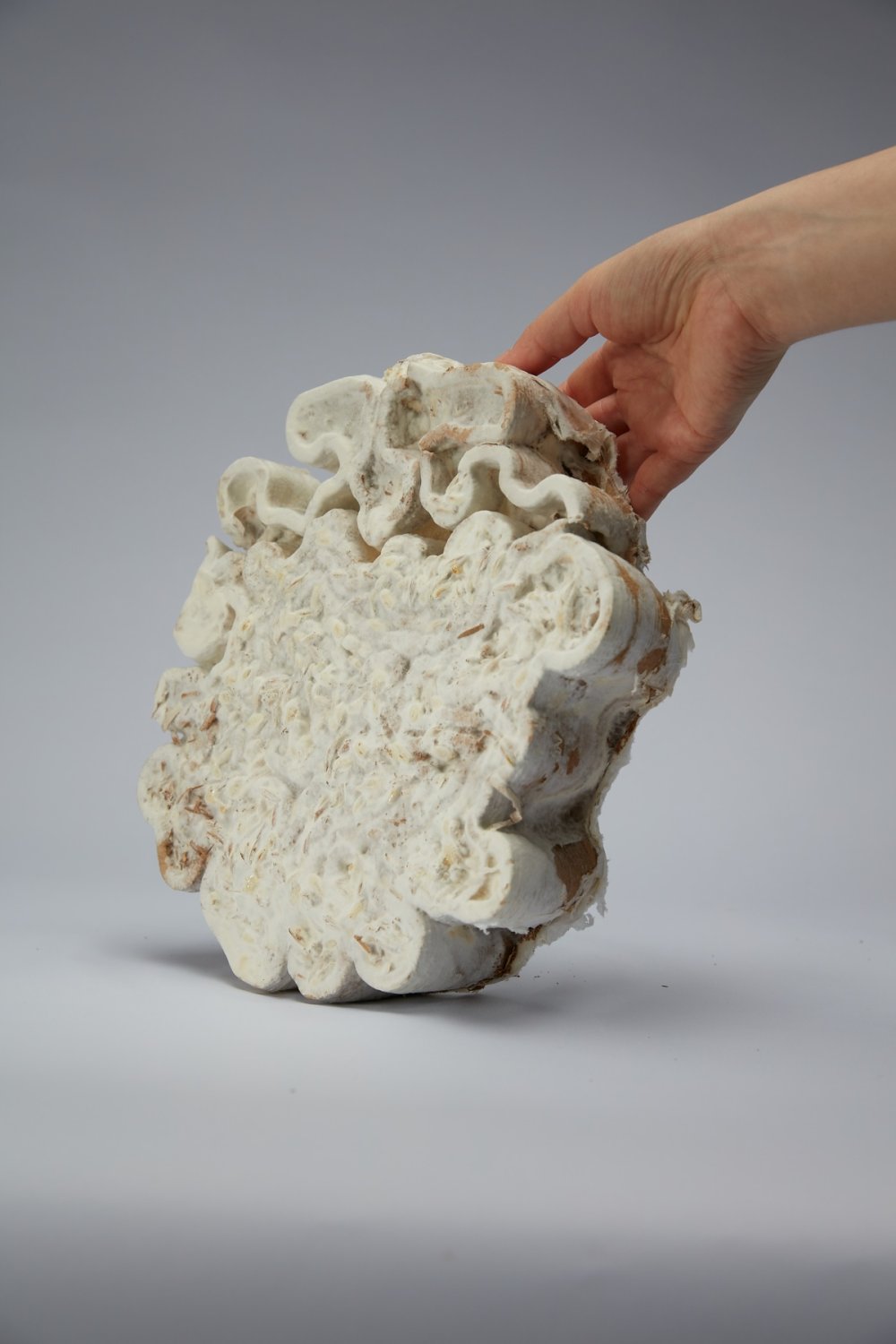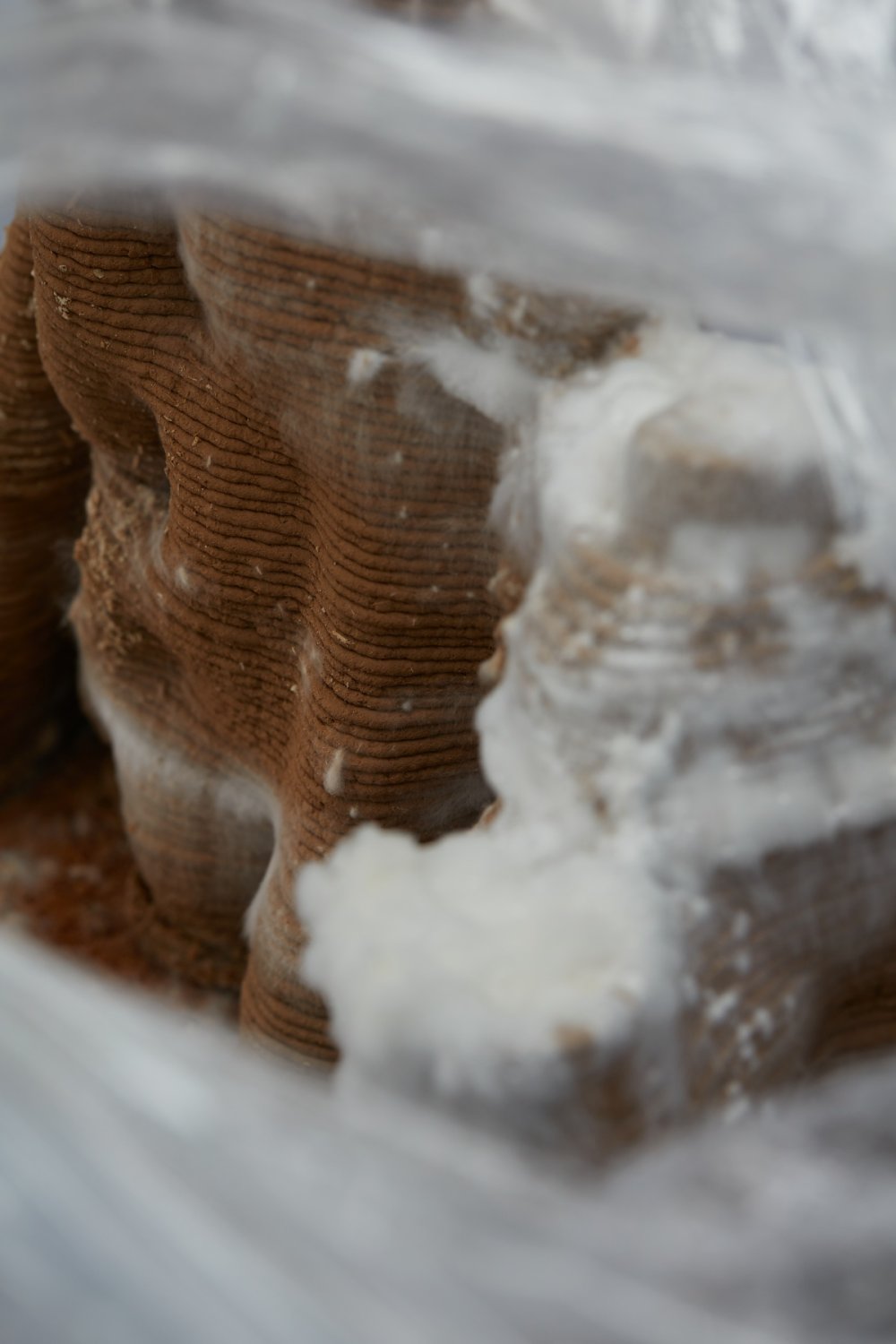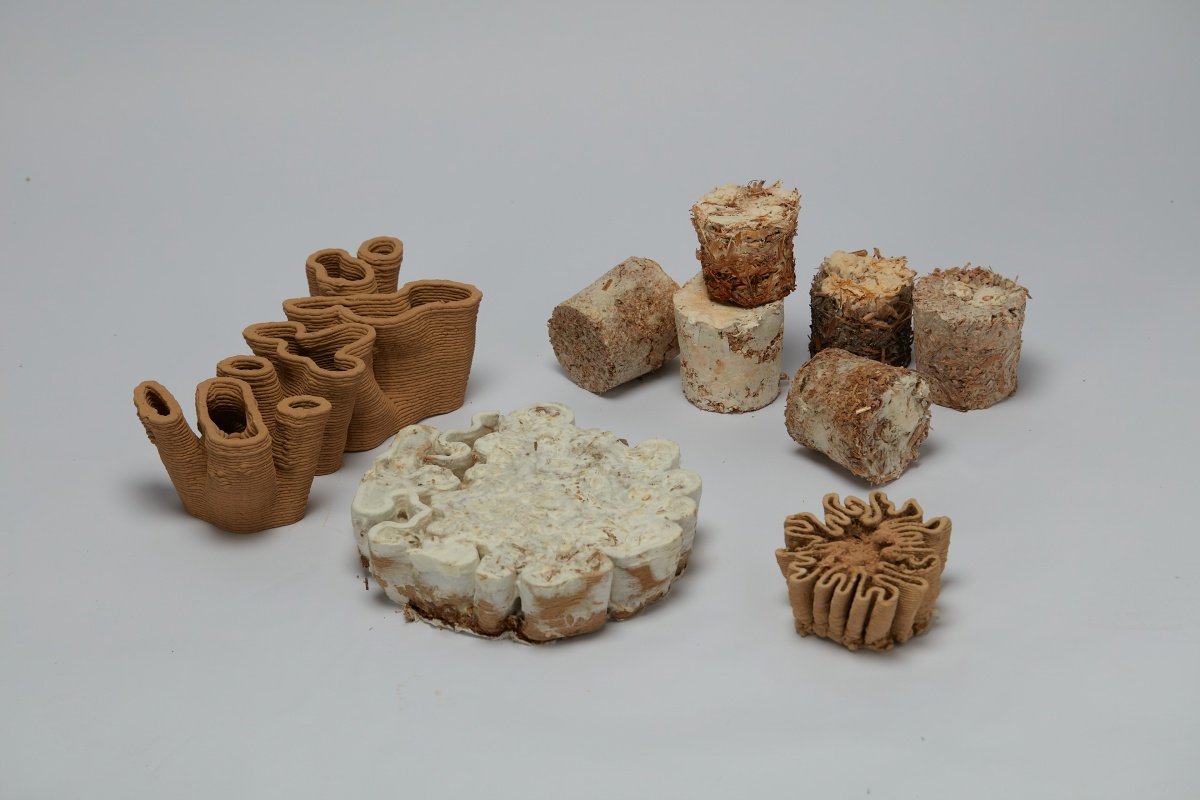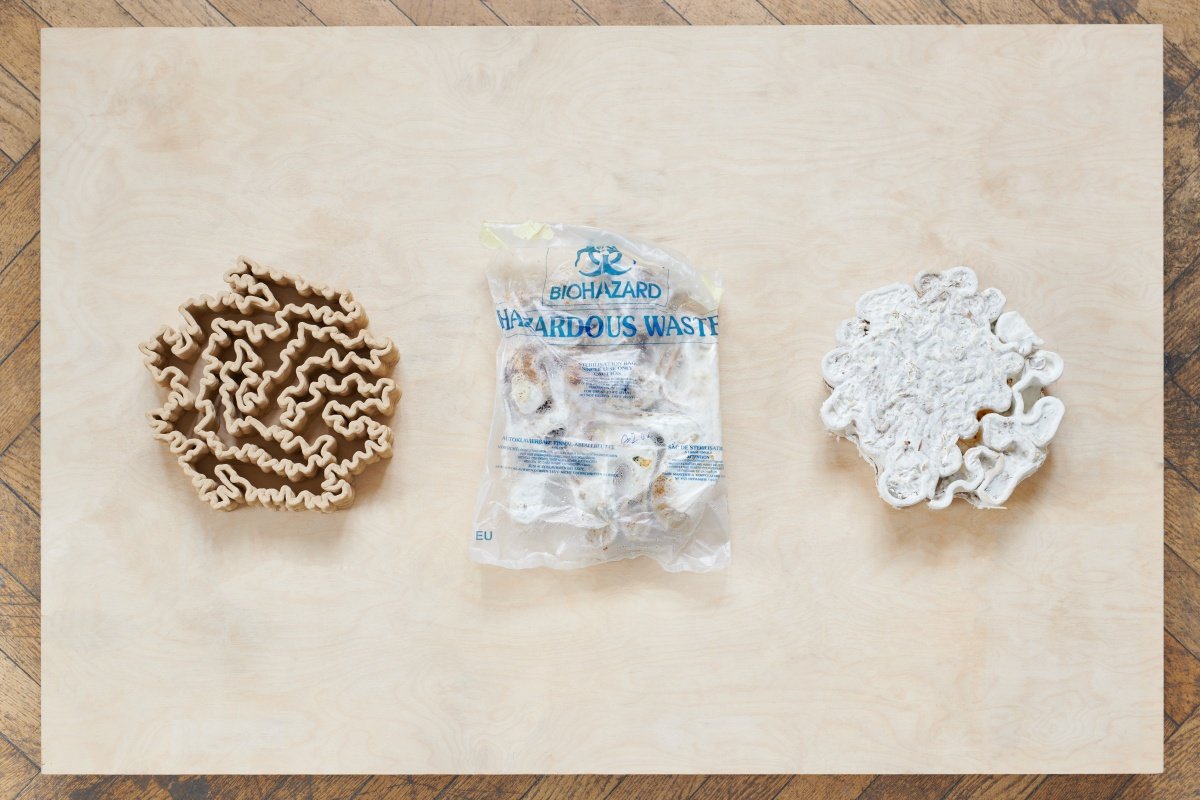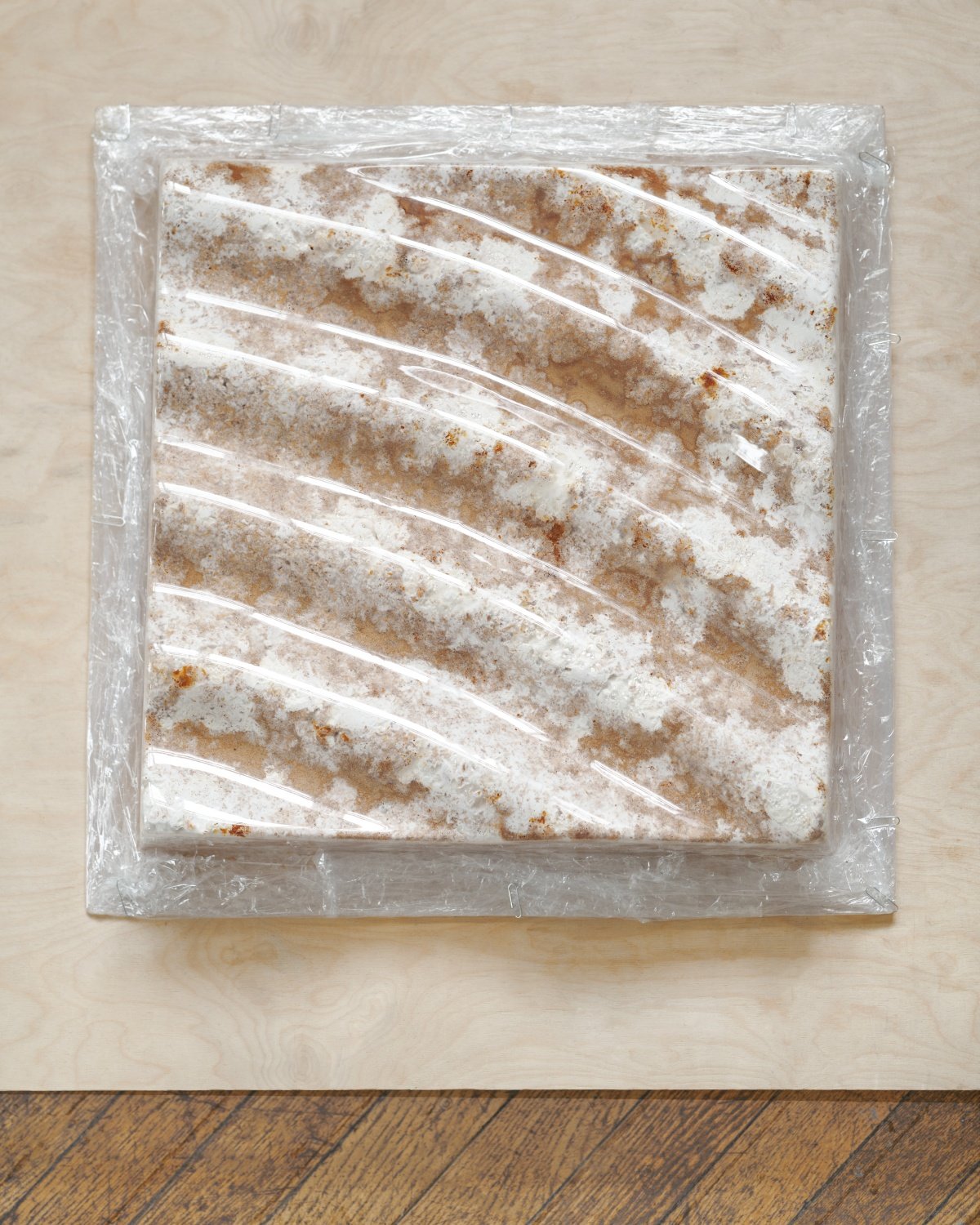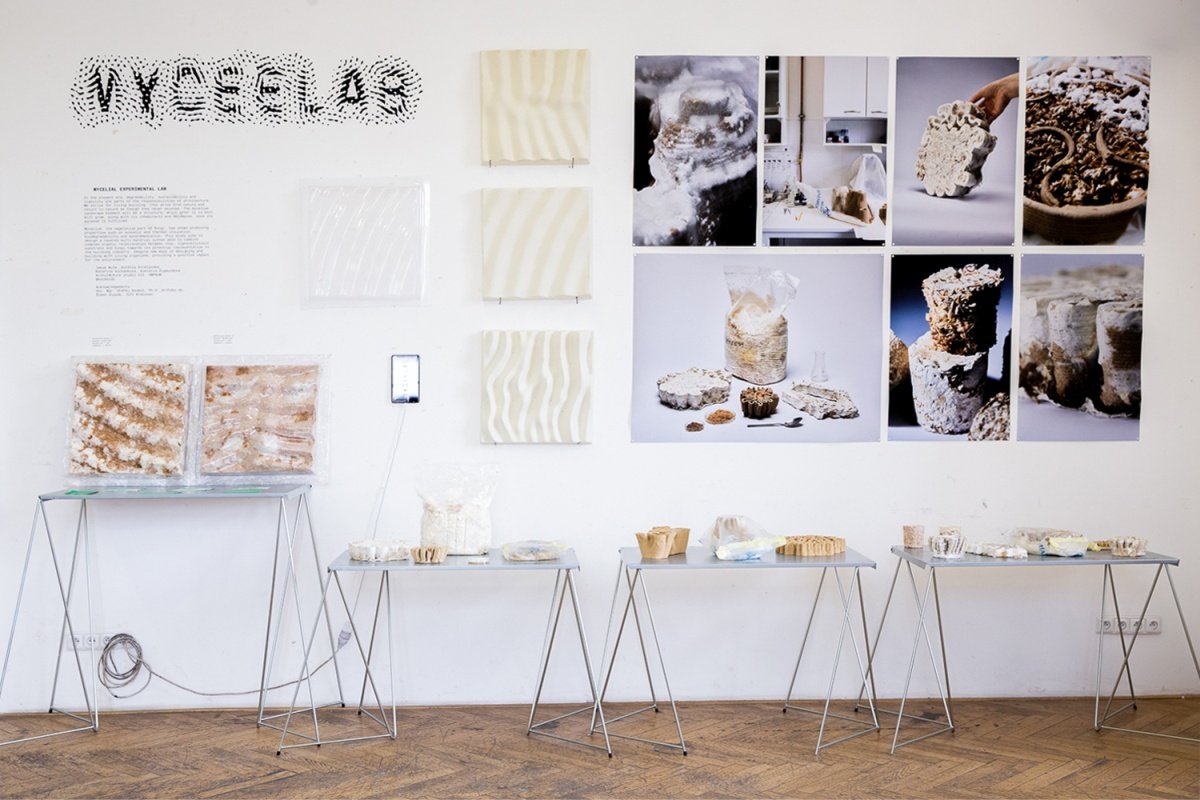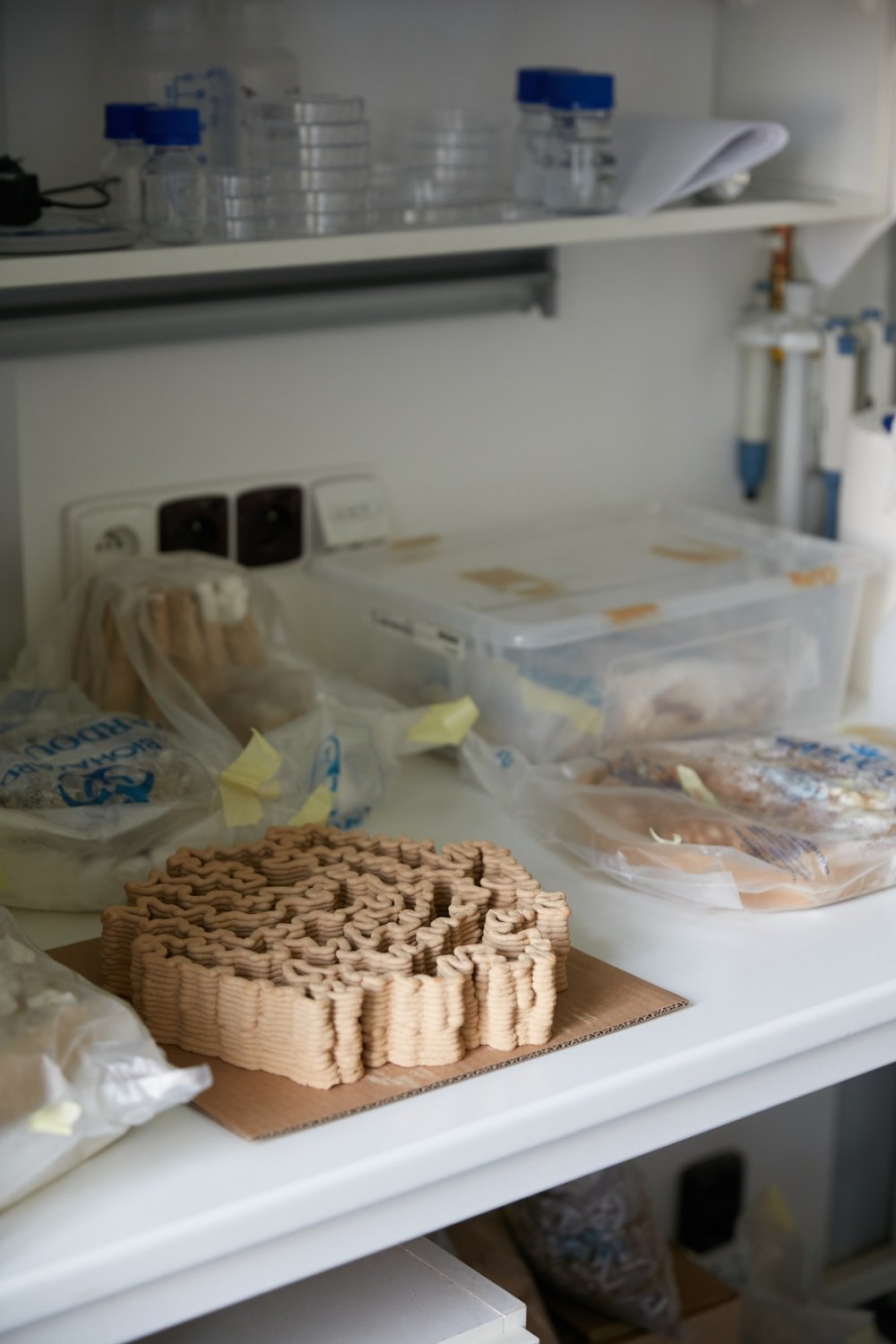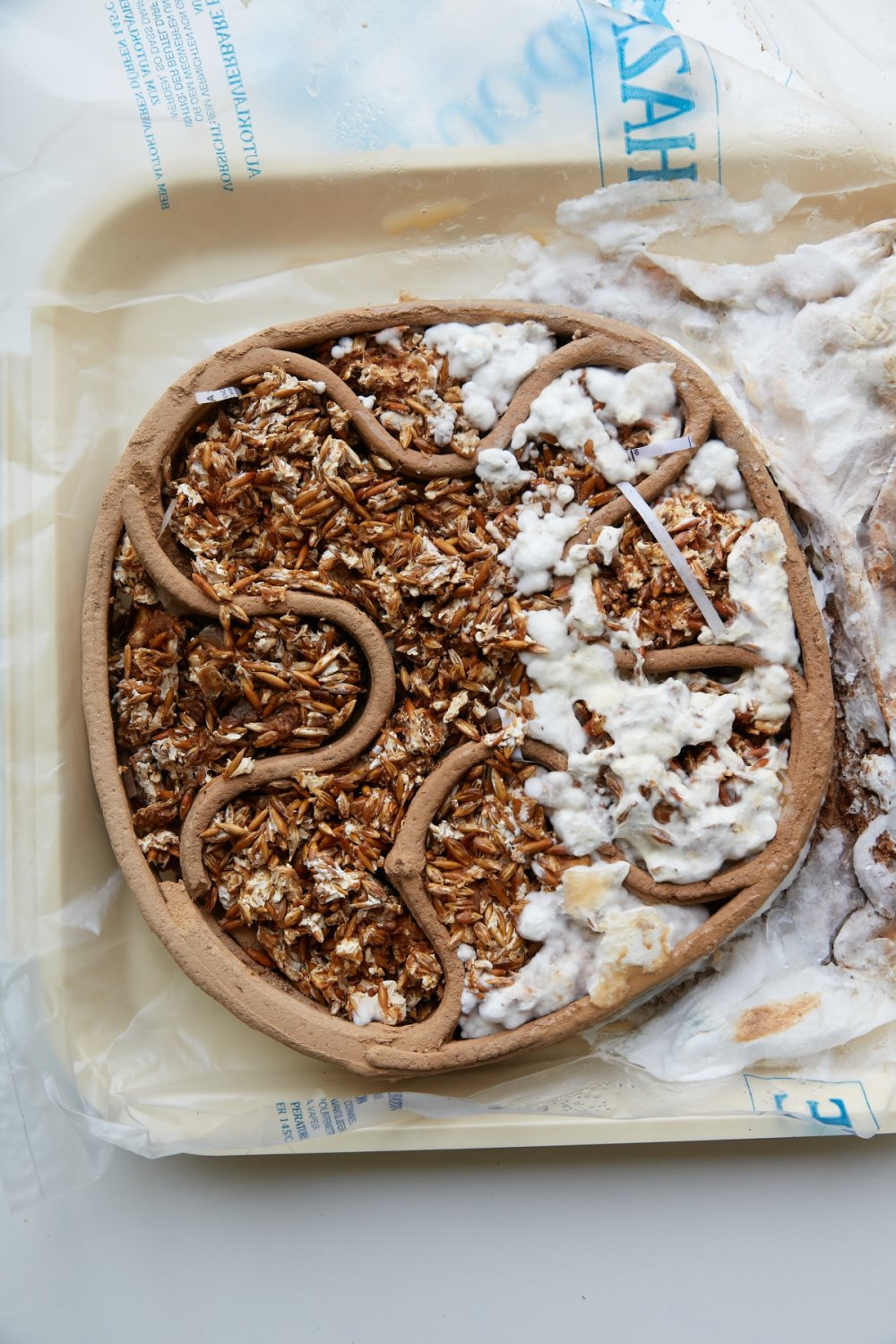The team from the Studio of Architecture III at UMPRUM presented at the ASCAAD (the Arab Society for Computation in Architecture, Art, and Design) conference in Amman, Jordan. The students presented their experimental platform Myceelab, which explores the potential of micellar composites and the unique technology of connecting the substrate with 3D printing. The presentation from UMPRUM was awarded as one of the two best of the entire conference.
The 11th ASCAAD conference, hosted by the Faculty of Architecture and Design at the University of Petra (UOP) in Amman, Jordan, November 7th - 9th, aimed to share experiences and seek new perspectives on computing and design in a sociocultural context. Among the guests from the scientific community and selected representatives of architects and universities, were the architects of the Myceelab project from UMPRUM. Their presentation was very well received and won one of the two awards for Best Presentation. Sherif Abdel Mohsen, President of ASCAAD, took a personal interest in the development of the project and its future use.
Myceelab responds to the current global climate and environmental crisis. It focuses on the potential of mycelial composites as a sustainable and environmentally friendly material in the built environment. Students from the Studio of Architecture III, led by Imrich Vasek and Shota Tsikoliya, have developed an alternative building material combining clay, lignocellulosic substrate, and fungi. They are exploring its use in industrial processing through digital design and robotic manufacturing.
"Working with mycelium was one of the semester-long tasks that our studio tackled. The students took up the topic so responsibly and in-depth that the academic assignment became a long-term project called Myceelab. They managed to develop a composite material using mycelium in combination with 3D printing, which is a unique process and technology that can be used further in architecture. Until now, we have not encountered a similar solution," says Imrich Vaško, head of the Studio of Architecture III, about the project.
Currently, two design prototypes have been proposed - Mycelial Block and Mycelial Landscape Element. Both organic architectural designs serve to sustainably interact between the built environment and the wider ecosystems in which they are embedded.
"More and more often, projects are appearing at UMPRUM that go far beyond the usual notion of artistic disciplines in their ambition and scope. The Myceelab project of the Studio of Architecture III is a prime example. Our aim is to develop and support the activities of our school so that students have the opportunity to actively intervene in changing the perceptions and needs of society in the field of environmental and ecological issues, social, and other topics. The Architecture III Studio fulfills this above all. It is constantly interested in new practices, materiality, and technology in design, architecture, and construction. At the moment we can mention the use of mycelia and algae, whose advantages lie in their availability, sustainability, ekology, and the quality of their composite properties", says Zdeněk Bezecný, Vice-Rector for Studies and Creative Activities at the Academy of Arts, Architecture, and Design in Prague, about the activities of the Academy.
The outcome of the Jordanian conference was summarised by the creators of the Myceelab project in a technical article published on the conference website. However, the students of the Studio of Architecture III did not stop with this result and plan to continue their project. Perhaps soon the material of the future from mycelium will become a common part of the environment around us.
The scientific article is available here: https://ascaad.org/conference/2023/docs/ASCAAD2023Proceedings.pdf
It starts on page 863.
Authors of the scientific paper:
Studio of Architecture III - Viktória Žigmundová, Kateřina Suchánková, Antónia Stretavská, and Jakub Míča.
Taylor Rayne (foreign consultant, student at the Royal Danish Academy Copenhagen - CITA research centre).
Shota Tsikoliya (assistant professor of the Studio of Architecture III).
Educational leadership: Imrich Vaško (head of studio), Shota Tsikoliya (assistant professor).
